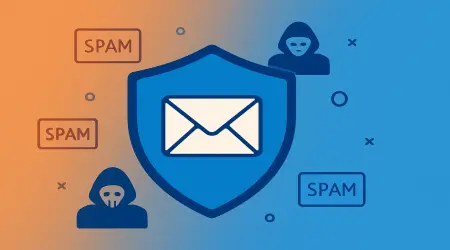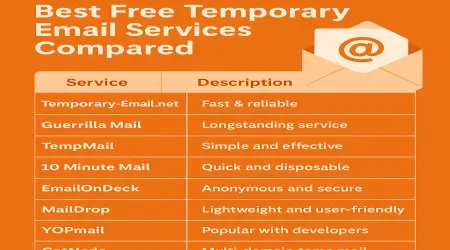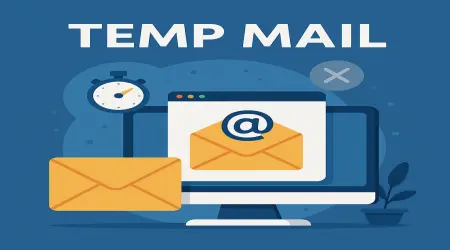

Disposable Email vs Fake Email: What’s the Difference? (Complete Guide 2025)
Introduction
In today’s digital-first world, email plays a central role in communication, registrations, and online security. But with rising concerns about spam, phishing, and privacy breaches, many users look for alternatives to traditional emails. This is where disposable emails and fake emails come into play.
Although these terms are often confused, they are not the same thing. Understanding the difference between disposable email and fake email is crucial to protecting your online identity in 2025.
What is a Disposable Email?
Definition and Purpose
A disposable email is a short-lived, auto-generated email address that works like a real one but expires after a set time. It’s designed to keep your personal inbox safe while allowing you to receive temporary messages.
Common Uses of Disposable Emails
Signing up for free trials
Accessing eBooks or downloads
Testing new websites or apps
Joining online forums without revealing identity
Benefits of Disposable Emails
Protects your real email address
Prevents spam from cluttering your inbox
Easy and free to generate anytime
What is a Fake Email?
Definition and Misconceptions
A fake email is not a real, functional email account. It’s often just a made-up address (like [email protected]) that doesn’t exist or doesn’t receive messages.
Risks of Using Fake Emails
Websites may reject them immediately
No way to confirm sign-ups or receive verification codes
Can lead to account lockouts if you need to reset passwords
Why Fake Emails are Not Reliable
Unlike disposable emails, fake emails don’t work in most cases. They may help you bypass simple forms, but they can’t handle account verification or real communication.
Disposable Email vs Fake Email: Key Differences
| Feature | Disposable Email | Fake Email |
|---|---|---|
| Functionality | Fully functional, temporary inbox | Non-functional, often invalid |
| Security | Protects against spam & phishing | No protection, risky |
| Use Cases | Safe for sign-ups, trials, downloads | Limited, often rejected |
| Legitimacy | Provided by trusted services | Made up, no provider support |
Advantages of Using Disposable Email in 2025
Protection Against Spam
Your personal inbox stays clean while junk mail goes to the disposable address.
Safer Online Sign-Ups
You can register for services without exposing your identity.
Temporary Access Without Risk
Perfect for one-time use—when you’re unsure if a website is trustworthy.
Dangers of Relying on Fake Emails
Account Verification Issues
Many platforms require a working inbox. Fake emails won’t pass.
Higher Risk of Scams and Phishing
Using fake addresses may push you into less secure, shady platforms.
Lack of Long-Term Usability
You can’t recover accounts or reset passwords with fake emails.
When Should You Use Disposable Email?
Personal Scenarios
Signing up for newsletters
Entering online contests
Downloading digital freebies
Business & Professional Uses
Testing marketing campaigns
Managing short-term projects
Creating demo accounts for clients
When NOT to Use Disposable Email
Banking & Financial Services
Never use disposable emails for sensitive accounts like banks, PayPal, or government IDs.
Work and Official Communication
Professional accounts need permanence and traceability, not temporary addresses.
Best Disposable Email Providers in 2025
Key Features to Look For
Instant generation
Secure inbox access
Automatic deletion of old emails
SSL encryption
Why Temporary-Email.net is a Trusted Choice
Among the top providers, Temporary-Email.net stands out for its reliability, user-friendliness, and security. It’s free, fast, and ensures maximum privacy in 2025.
FAQs About Disposable vs Fake Emails
Q1: Is disposable email legal?
Yes, it’s completely legal when used responsibly.
Q2: Can fake emails be tracked?
Usually no, since they don’t exist—but some systems detect them as invalid.
Q3: Do websites block disposable emails?
Some platforms may restrict temp emails, but most accept them.
Q4: Are disposable emails safer than fake ones?
Absolutely. Disposable emails function securely, unlike fake ones.
Q5: How long does a disposable email last?
Depending on the provider, from 10 minutes to 24 hours.
Q6: Can I use disposable email for social media accounts?
Yes, but only if you don’t need long-term access.
Conclusion: Choosing the Right Email Option
When it comes to disposable email vs fake email, the choice is clear. Disposable emails are safe, functional, and secure, while fake emails are unreliable and risky.
In 2025, as online threats grow, the smarter choice is to use a trusted disposable email provider like Temporary-Email.net to protect your identity and keep your inbox clutter-free.

